Total Suspended Solids
Total Suspended Solids
How have total suspended solids in both estuaries changed over time?
Total Suspended Solids (TSS) at Adams Point had a statistically significant increasing trend since monitoring began in 1989 across both high and low tide sampling. At the Great Bay Station, TSS concentrations had no temporal trend, remaining consistent since 2002. At low tide, both the Adams Point and Great Bay Stations had decreasing levels over 2019, 2020, and 2021. At the Hampton River Station in 2021, total suspended solids concentrations were at medium levels: higher than some Great Bay Estuary stations but lower than others. The level of suspended solids in an estuary, and thus the clarity of its waters, varies with the tides, rainfall, regional development, an increase or decrease in shoreline vegetative buffers, and a host of other factors.
The Adams Point Station has the longest time series dating back to 1989. Since that time, total suspended solids have statistically increased, but concentrations appear to be decreasing in recent years (Figure 13.2). Median annual low measurements at Adams Point over the last three years (2019 – 2021) are all lower than the six preceding years. The Upper Piscataqua River Station has a similar pattern, with recent years showing a plateau in total suspended solids concentrations (Figure 13.3).
Broadly, Table 13.1 demonstrates clearly that total suspended solid concentrations have increased around the Great Bay Estuary over the past two decades, with most of the stations indicating statistically increasing trends. For the Hampton-Seabrook Estuary, data on total suspended solids has only been collected for the period 2018 through 2021. During that time, values have been comparable to the Great Bay Station, ranging between 18.3 and 23.2 mg/L (Figure 13.4). At the Great Bay Station, since 2002, suspended solids have remained relatively stable, with a low tide median concentration of 17.1 mg/L for the entire record. The observed statistical increase in suspended solids at the Great Bay Station is likely driven by the eight measurements that exceed 50 mg/L since 2015. Despite the increasing trend, the median concentration decreased in 2021 to 18.3 mg/L (Figure 13.5). The median concentration in 2021 exceeded that of Adams Point (17.9 mg/L).
For context, consider that values over 15 mg/L are often cited as being very challenging for the health of eelgrass.41 When concentrations are regularly above 15 mg/L, light is blocked and eelgrass cannot photosynthesize, while seaweeds and phytoplankton continue to thrive since they have lower photosynthesis requirements. For more on total suspended solids and eelgrass, see “Light.”
High suspended solids concentrations also have the potential to harm oysters. Oyster monitoring efforts indicate that oyster reefs that are not built high enough above the estuary floor can be smothered by sediment deposits.
As is often the case with estuarine science, there is a range of conditions that are optimal for ecosystems. For example, some light scattering by total suspended solids helps phytoplankton suspended in the water column receive sufficient light to grow. On the other hand, if the water is clearer, more light reaches the bottom, which benefits eelgrass. Thus, there is a “sweet spot” that balances the light available to phytoplankton — critical food for oysters and fish — with the light for benthic primary producers like seagrass.
Chemists, ecologists, hydrologists, and oceanographers are working together to understand the connections between the source and transport of sediments in our estuaries. For example, decreases in eelgrass and oyster habitats lead to greater resuspension of sediments, but sediments may also be added to the estuary from the surface water inflows or the estuary shores. At the same time, hydrologic and hydrodynamic drivers (e.g., changing climate patterns such as drought or record rainfall) can influence the delivery of total suspended solids from the surrounding watershed and the flushing of total suspended solids from the estuary. Finally, it is important to acknowledge that a certain amount of sediment transport from the watershed is necessary to maintain salt marsh elevations, and so is a key factor in determining salt marsh resilience to rising sea-level.
Acknowledgments and Credit
Anna Mikulis (UNH) with contributions from Miguel Leon (UNH), Kalle Matso (PREP), Easton White (UNH), Lara Martin (UNH), and Tom Gregory (UNH).
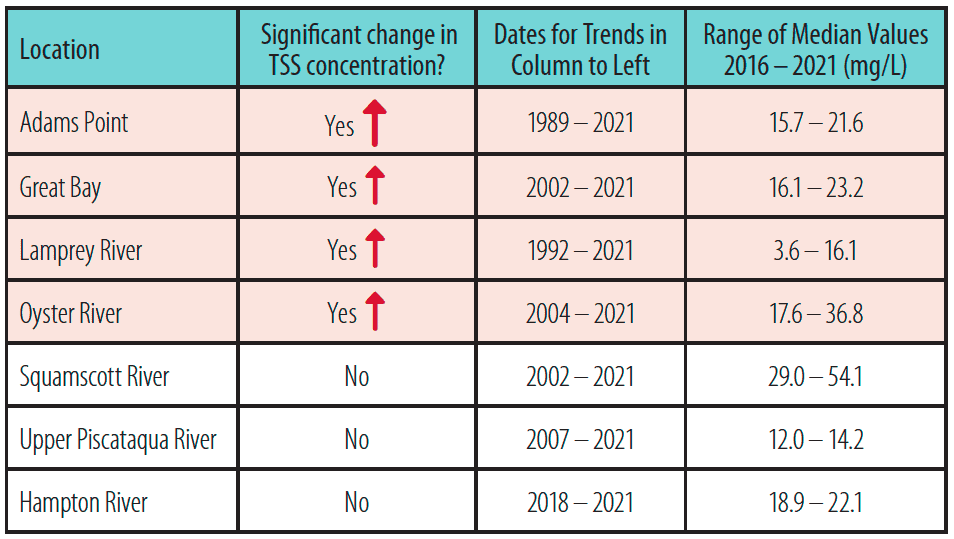
Table 13.1: Total suspended solids (TSS) trends and median values at six stations in the Great Bay Estuary and one station in the Hampton-Seabrook Estuary. Trends and values reflect low tide sampling only.
Data source: Jackson Estuarine Laboratory, UNH
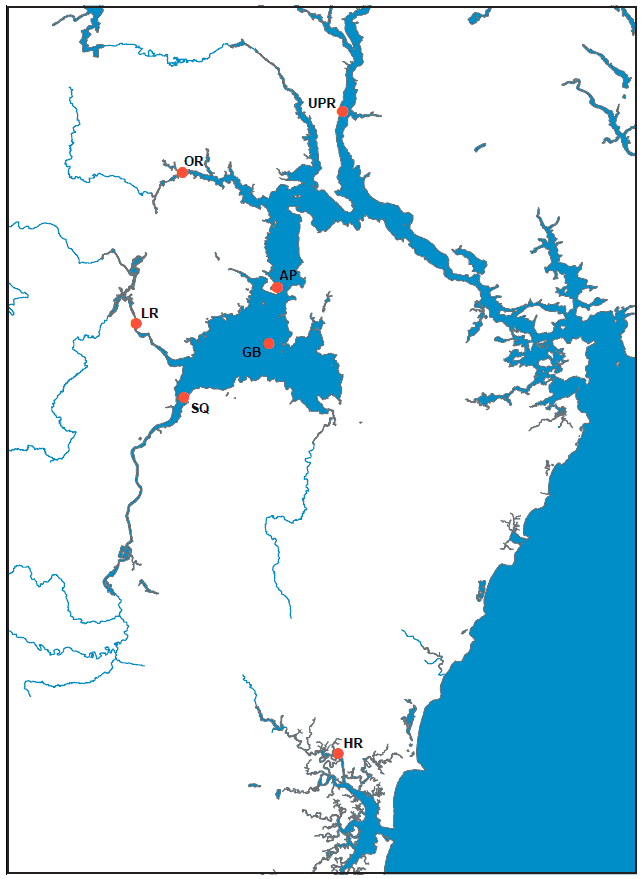
Figure 13.1: Monitoring stations for total suspended solids including Adams Point (AP), Great Bay (GB), Lamprey River (LR), Oyster River (OR), Squamscott River (SQ), Upper Piscataqua River (UPR), and Hampton River (HR).
Data source: Jackson Estuarine Lab, UNH
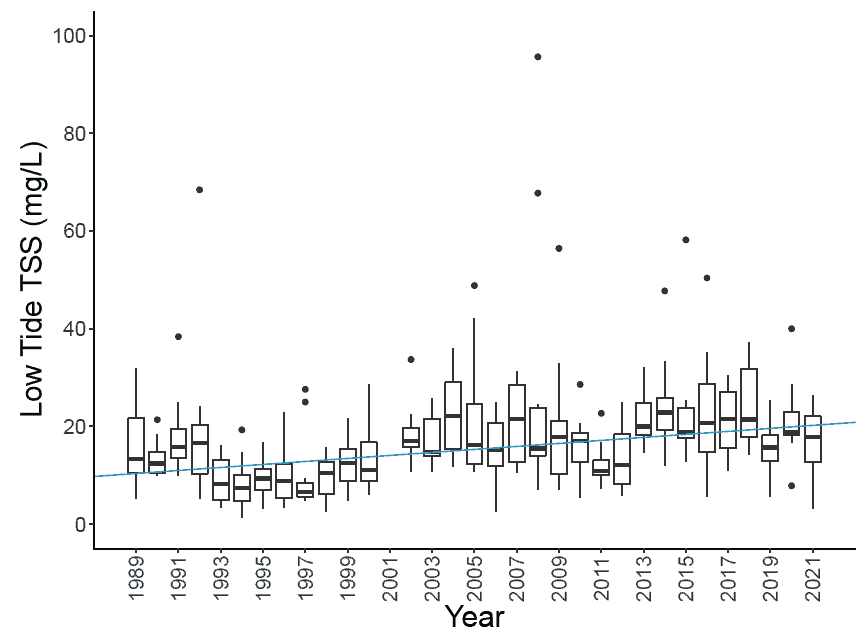
Figure 13.2: Total suspended solids (TSS) at Adams Point Station (low tide only). Boxes encompass the middle 50% of the data points. The horizontal line in each box is the median and the vertical whiskers encompass the remaining data. “Outliers” are shown as individual points. Year 2001 not included due to missing data. The linear regression represented by the blue line shows the statistically significant increasing trend in annual median TSS concentrations.
Data source: Jackson Estuarine Laboratory, UNH
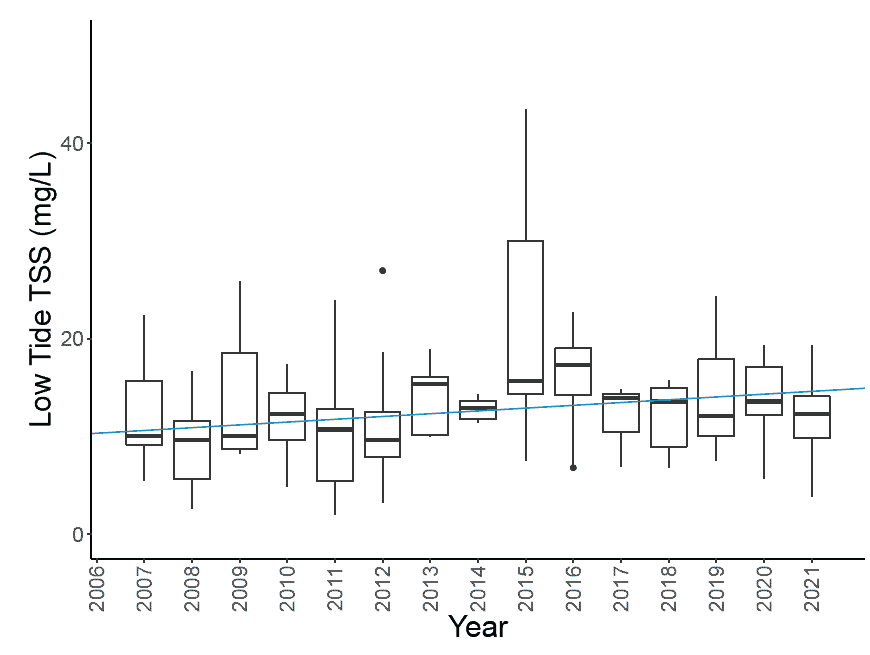
Figure 13.3: Total suspended solids (TSS) at Upper Piscataqua River Station. Boxes encompass the middle 50% of the data points. The horizontal line in each box is the median and the vertical whiskers encompass the remaining data. “Outliers” are shown as individual points. The linear regression represented by the blue line shows the statistically significant increasing trend in annual mean TSS concentrations.
Data source: Jackson Estuarine Laboratory, UNH
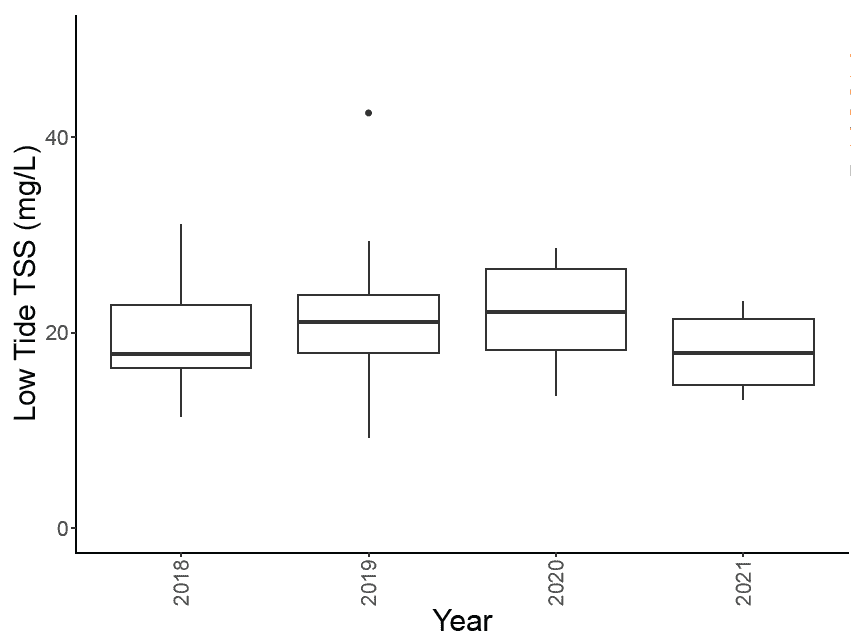
Figure 13.4: Total suspended solids (TSS) at Hampton River Station from 2018 to 2021. Boxes encompass the middle 50% of the data points. The horizontal line in each box is the median and the vertical whiskers encompass the remaining data. “Outliers” are shown as individual points.
Data source: Jackson Estuarine Laboratory, UNH
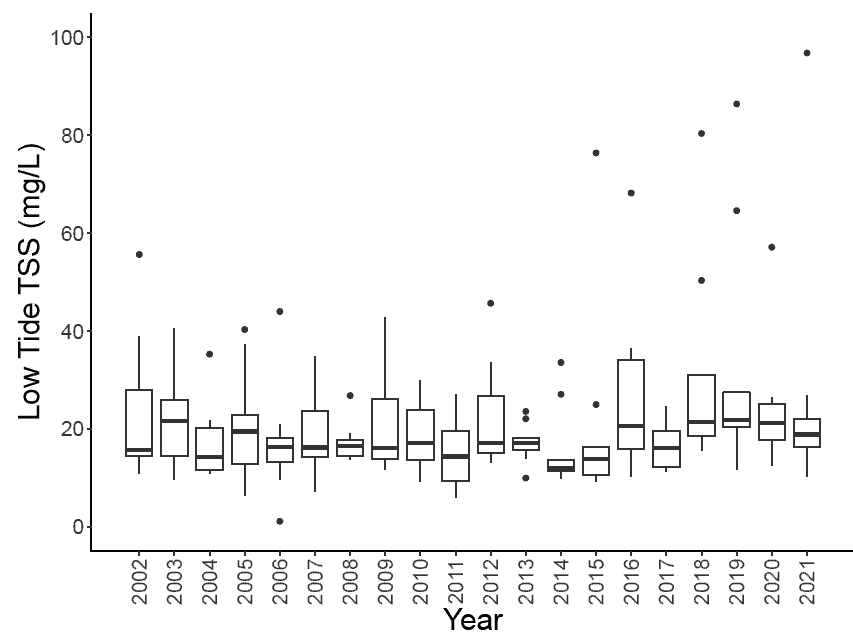
Figure 13.5: Total suspended solids (TSS) at Great Bay Station (low tide only). Boxes encompass the middle 50% of the data points. The horizontal line in each box is the median and the vertical whiskers encompass the remaining data. “Outliers” are shown as individual points.
Data source: Jackson Estuarine Laboratory, UNH
Total Suspended Solids – Extended Report
Includes methods, data, and additional discussion not included in the Printed Edition.